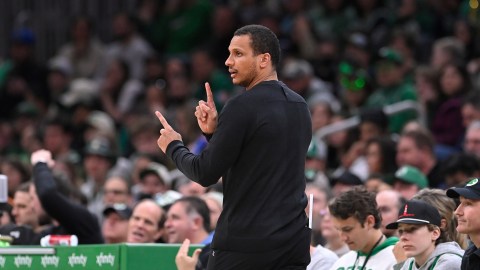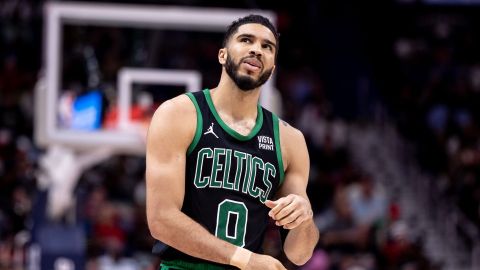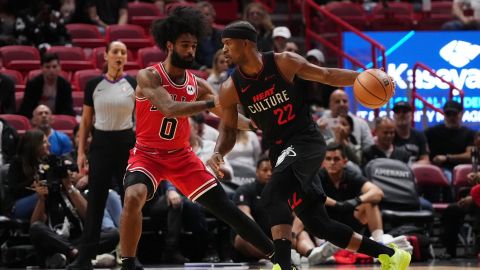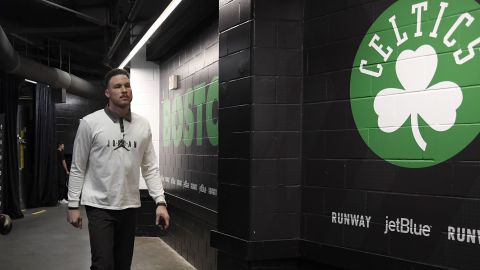 WALTHAM, Mass. — At various times throughout his first season as an NBA coach, Brad Stevens has been struck by some of the differences between this game and the one played at the college level, where he spent his first 13 years as a coach.
WALTHAM, Mass. — At various times throughout his first season as an NBA coach, Brad Stevens has been struck by some of the differences between this game and the one played at the college level, where he spent his first 13 years as a coach.
There’s the obvious differences, like the longer format, from 40 to 48 minutes, and the extra foul each player gets before disqualification. Three-second and five-second rules also have their own wrinkles at both levels.
This weekend, while watching NCAA tournament games in between preparing for Wednesday’s game against the Toronto Raptors, Stevens was reminded of another small, yet substantial, difference in the games.
“It’s just accentuated a little bit,” Stevens said at the Boston Celtics’ practice facility. “You realize when you’re sitting on the couch watching games that no lead is safe until that horn sounds.”
The rule Stevens was referring to is how NBA teams are allowed to inbound the ball from halfcourt when they call timeout after an opponent’s made basket. In college, the team still needs to inbound from its own baseline, significantly increasing the degree of difficulty for a game-winning shot.
Of course, college teams still sometimes go coast-to-coast for last-second shots in those situations, but they are frantic — and often, simply lucky — final moments. In the NBA, coaches can draw up actual plays, creating more drama for the offense, defense and fans.
“When you’re in college, you want to shoot the ball with four or five seconds left if it’s a tie game, because maybe you get a chance to get a rebound, and they’re going to have a hard time scoring (if you miss),” Stevens said.
By contrast, Stevens pointed to Friday’s game in Toronto, where Kevin Durant gave the Oklahoma City Thunder a one-point win with a late 3-pointer. The Thunder trailed by five points with less than a minute left, took the lead on Durant’s shot with 1.6 seconds to go and still needed to survive a fadeaway attempt by DeMar DeRozan at the buzzer.
“That changes things a little bit, both ways,” Stevens said. “Yes, you can advance it if you’re on offense, but yes, you have to be aware that they can, too. It adds excitement to the end of the game.”
More excitement, coach? Fans of Kentucky, Stanford and Dayton are probably just fine with the level of excitement as is. Any more, and they’d need to keep a defibrillator on hand. Still, point well taken.



